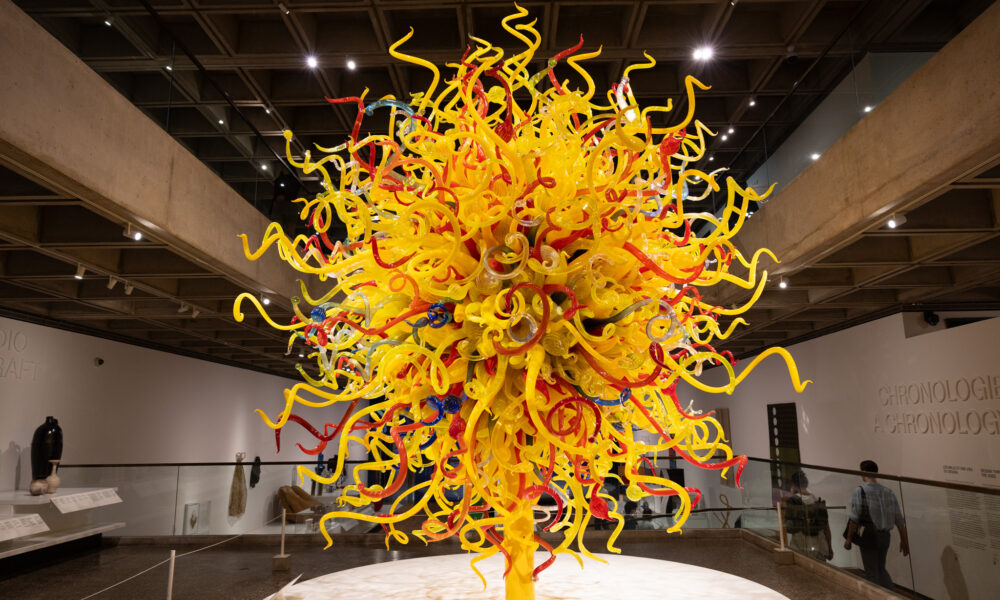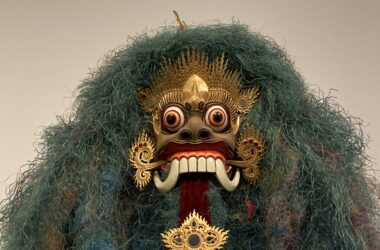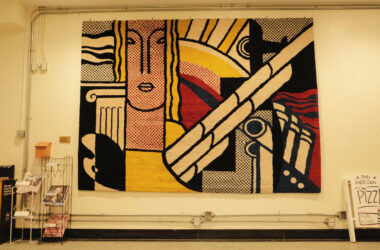To my right stands a four-foot-tall ceramic vase with hands cupping its own belly. To my left, chairs built from large plains of vibrant primary colours. Directly in front of me is a bird’s nest half my height made from plush felt—inside resting three large eggs. As I continue to walk through the MMFA’s Decorative Arts and Design Pavilion, reopened on Sept. 13, a diverse melange of quirky items surrounds me. Most strikingly, the pieces of art orbit around a massive abstract piece created by Dal Chihuly in 2003: A twisting, ebbing horde of warm-toned blown glass, aptly titled The Sun.
The museum’s reopened exhibit is a feat brought together by a host of keen-eyed art collectors. Notably featured is Liliane and David Stewart’s (the namesakes of the pavilion) 5000-piece art and design assemblage, a donation made to the MMFA in 2000.
Taking in the exhibition is an overwhelming endeavour. One minute you find yourself examining Kantharos with Geometric and Plant Motifs, an Italian glass bowl crafted between 700-200 BCE, and the next studying a 2009 table lamp that resembles a plate of spaghetti. The broad strokes made by this installation are reflective of the expansive nature of decorative art: This type of art is characterized by the creativity applied to utilitarian objects, such as chairs and vases. This vast category leaves much liberty for what can fit into the exhibit, with the pavilion hosting items from earrings to a Smart Car.
The considerable differences between pieces of the same use are shocking. The pavilion is home to many tea and coffee sets, each one entirely distinct from the last. Despite having the same function, artists can make a teapot entirely their own. For example, one glass museum case displays the Como Tea and Coffee Service, a sleek crowd of silver-plated vessels created in 1957. The set presents a futuristic tone, characteristic of the Mid-Century modern style popular in the 1950s. Within the same case sits Coral Firs Tea and Coffee Service, and Soup Tureen, a set of white earthenware carafes ornamented with wobbly orange trees sitting atop yellow hills. The troop of dishware was designed by Clarice Cliff, the mother of the Art Deco style, born in the 1930s.
The fine details of service-based objects demonstrate human beings’ innate draw to art. It would be cheaper and easier if, throughout time, people simply designed one form of simple coffee set. Yet, we see that items are far more than pure usage: They function as vessels for creativity.
Noting the divergences among designs throughout time maps a history, for the art that people seek from moment to moment changes based on features of the period. As noted above, the 1950s tea and coffee set was boldly sleek, crafted in aerodynamic shapes, appearing almost spaceship-like. This cosmo-themed trend was influenced by the Space Race, a chase for the stars fought by the U.S. and the Soviets post-WWII.
Design represents the forms of creativity that humans wish to interact with in their daily lives. Looking back at things, such as utensils and chairs, forges a relationship with people of the past. One can imagine a person during the Qing dynasty 200 years ago eating with their tortoise shell Portable Knife and Chopstick Set, admiring its sleek and compact design.
Visiting the MMFA’s newly curated Pavilion of Decorative Art and Design is an eye-opener as to how art appears in our daily lives. People often take for granted the detail that goes into making the chairs that they sit on and the tables that they eat from. However, if one looks closer, they may be able to catch a glimpse of the little glimmers of creativity hiding all around us.
The Arts and Design Pavilion is a new permanent exhibit at the MMFA. Tickets are available both online and in person. (Free for those aged 25 and under).







